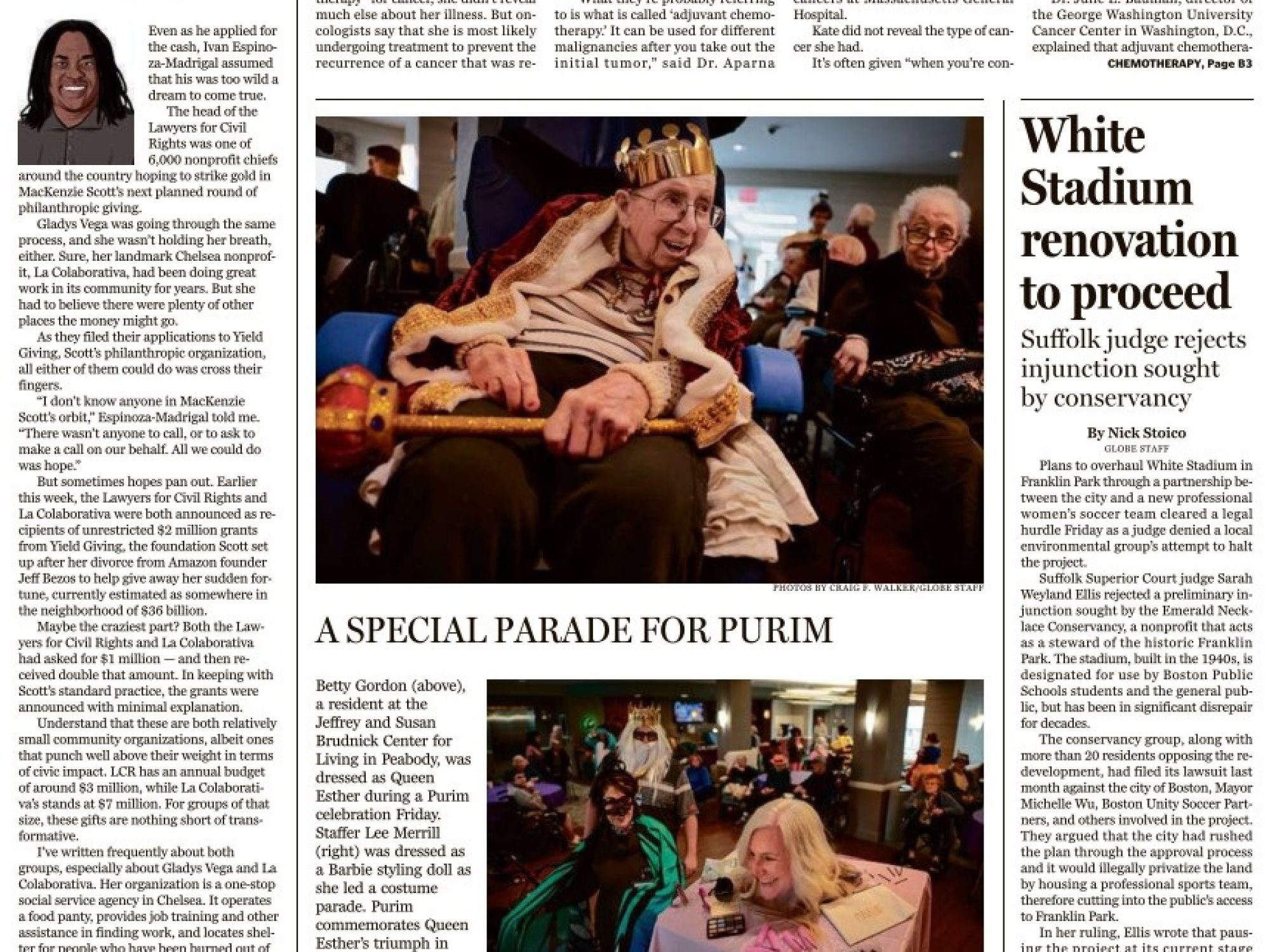Eye-controlled technology a “natural fit” for woman who loves learning, language and life
By Patti Murphy of Tobii Dynavox
Andrea Solomon is a strong woman, inside and out, always showing by her example that caring for oneself while caring for others really works. While her two daughters were growing up, Andrea put on her gym shorts and sweatshirt for almost daily workouts. She loved bicycling, hiking, cross-country skiing and swimming. While pursuing her post-graduate studies, Andrea made time for community activities through her synagogue and as a League of Women Voters board member. She turned to reading when she wanted to relax. Yet family came first—and still does.
“My mom and I have a very close and special relationship,” said Andrea’s daughter Amanda. Andrea also remains close with her older daughter Dina, Dina’s son Linden, 8, as well as her own brother Scott and sister Margie. Dina was her son’s age and Amanda was 5 when their mother learned that she had MS – multiple sclerosis—more than 30 years ago. The chronic neurological disease, which affects nerves in the brain and spinal cord, is most common in adults.
Like most people with MS, Andrea, 68, has alternately experienced periods of remission and setbacks. She has taken extremely good care of herself all along, her daughter said, staying active and eating healthy to mitigate effects of the disease. “She did absolutely everything she could for as long as she could,” Amanda said. “I would characterize my mother as a strong and determined woman who perseveres through her illness with a spirit and force that astounds all who know her.” Except for a three-month stay in a rehab hospital, Andrea lived at home. Her physical limitations eventually reached a level where she needed skilled daily care, and she moved to the Leonard Florence Center in Chelsea, MA five years ago.
“It feels more like a home than a nursing home,” said Andrea, her optimistic, creative and loving approach to life untouched by the transition. She feels lucky to have a Tobii Dynavox I-12 to assist her with almost every facet of communication, especially the pursuit of her longtime dream of writing children’s literature. Time spent with Linden provides inspiration for her sweet and funny stories. Andrea has written book reviews and loves 1950s movie classics. Her taste in authors is similarly classical, though she savors a good cookbook. Andrea continued her formal education through the mid-1990s while managing her illness, earning a Master of Education degree from Harvard with a concentration in secondary education, and went on to become certified as a reading specialist.
For years, Andrea served her synagogue as a volunteer and employee. She edited publications, taught in the after-school program and eventually held the position of co-principal at its religious school. Andrea also had her own writing, editing and publication design business.
Life with MS puts a new perspective on Andrea’s love of learning and language. She is among the small but solid number of those with the condition dealing with speech loss. Andrea had very soft and sometimes inaudible speech due to general weakness and breathing difficulties that the MS presented when she met speech-language pathologist Katie Seaver, M.S., CCC-SLP a few years ago. Spoken communication, though still possible for Andrea, is less than optimal. “If someone is face to face and a good lip reader, you can get somewhere”, said Mrs. Seaver, who routinely recommends devices for center residents whose speech may be problematic due to conditions such as MS, amyotrophic lateral sclerosis (ALS) or a stroke.
Andrea started out with an earlier Tobii Dynavox eye-controlled device. While she needed a reliable way to say things, she also wanted to write, keep up with emails, view photos and stay in touch with the world. The device lets her do all of that. With the I-12, as before, Andrea can convey whatever she wants to say. She composes and shares her thoughts by moving her eyes since she cannot use her hands.
“It was the most natural fit for me,” she said of the technology.
Strategic considerations and physical comfort played a part in recommending the device, Mrs. Seaver said. “Andrea’s positioning shifts very easily because of increased muscle tone throughout her body so her eyes may move if her arm comes off of her arm rest or if she reclines in her wheelchair. The eye-gaze camera on the device allows for that level of movement, while continuing to be calibrated to her eyes.”
Andrea spends a lot of time in the house dining area for social reasons, but also for her safety and well-being. Thanks in part to the I-12’s volume and clarity, Andrea can easily call for assistance—very important because she cannot move her wheelchair on her own. The device also provides the online access she needs to access the center’s environmental control system. Next up is for Amanda to record messages for the I-12, which will allow Andrea to speak in a familiar voice much like her own used to be. So much alike in fact that Andrea’s own mother couldn’t tell Andrea from Amanda over the telephone!
Recalling when Linden carried Andrea’s wheelchair mount to help both her and his grandma, Mrs. Seaver said it comes as little surprise that Andrea’s family mirrors her caring spirit. “She’s just a very smart, well-spoken person with great ideas and values.”
Andrea, meanwhile, considers herself—and her hopes for the future—pretty ordinary. She looks forward to watching her grandson grow, maybe finding a way to travel and the next book that she can’t put down.
“I accept life as it comes,” Andrea said. “If something doesn’t quite fit I find a way to fold that in. It’s not inspiration. It’s the way I live.”
Read the original article here: Eye-controlled technology a “natural fit” for woman who loves learning, language and life



